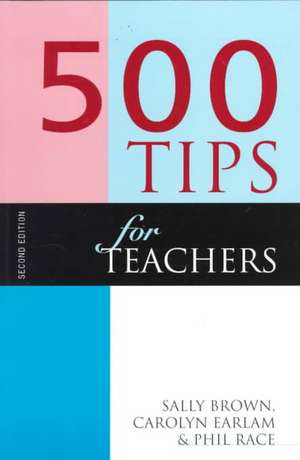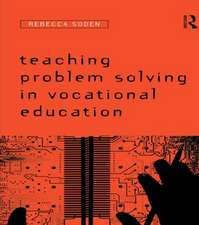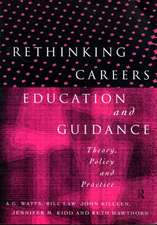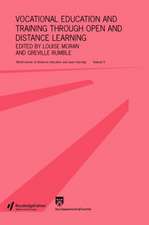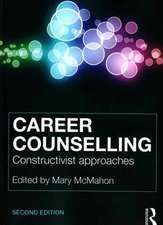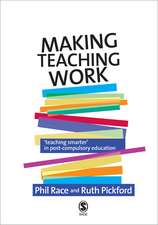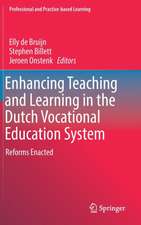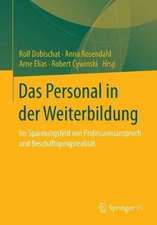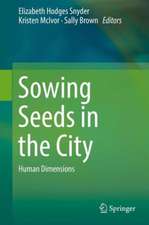500 Tips for Teachers: 500 Tips
Autor Sally Brown, Carolyn Earlam, Phil Raceen Limba Engleză Paperback – sep 1998
| Toate formatele și edițiile | Preț | Express |
|---|---|---|
| Paperback (1) | 230.36 lei 43-57 zile | |
| Taylor & Francis – sep 1998 | 230.36 lei 43-57 zile | |
| Hardback (1) | 613.49 lei 43-57 zile | |
| Taylor & Francis – 27 ian 2017 | 613.49 lei 43-57 zile |
Din seria 500 Tips
- 5%
 Preț: 367.48 lei
Preț: 367.48 lei - 34%
 Preț: 763.78 lei
Preț: 763.78 lei -
 Preț: 232.27 lei
Preț: 232.27 lei -
 Preț: 391.29 lei
Preț: 391.29 lei -
 Preț: 445.23 lei
Preț: 445.23 lei -
 Preț: 230.28 lei
Preț: 230.28 lei - 15%
 Preț: 502.35 lei
Preț: 502.35 lei - 17%
 Preț: 207.51 lei
Preț: 207.51 lei - 29%
 Preț: 1407.70 lei
Preț: 1407.70 lei - 22%
 Preț: 378.09 lei
Preț: 378.09 lei -
 Preț: 369.73 lei
Preț: 369.73 lei - 15%
 Preț: 560.94 lei
Preț: 560.94 lei - 15%
 Preț: 424.75 lei
Preț: 424.75 lei -
 Preț: 347.54 lei
Preț: 347.54 lei - 14%
 Preț: 306.73 lei
Preț: 306.73 lei - 12%
 Preț: 299.52 lei
Preț: 299.52 lei -
 Preț: 347.54 lei
Preț: 347.54 lei -
 Preț: 345.63 lei
Preț: 345.63 lei - 18%
 Preț: 891.36 lei
Preț: 891.36 lei -
 Preț: 406.59 lei
Preț: 406.59 lei -
 Preț: 347.54 lei
Preț: 347.54 lei -
 Preț: 229.39 lei
Preț: 229.39 lei -
 Preț: 228.41 lei
Preț: 228.41 lei - 18%
 Preț: 1069.58 lei
Preț: 1069.58 lei - 15%
 Preț: 488.62 lei
Preț: 488.62 lei - 18%
 Preț: 2083.26 lei
Preț: 2083.26 lei - 25%
 Preț: 163.42 lei
Preț: 163.42 lei
Preț: 230.36 lei
Nou
Puncte Express: 346
Preț estimativ în valută:
44.08€ • 46.14$ • 36.69£
44.08€ • 46.14$ • 36.69£
Carte tipărită la comandă
Livrare economică 31 martie-14 aprilie
Preluare comenzi: 021 569.72.76
Specificații
ISBN-13: 9780749428358
ISBN-10: 074942835X
Pagini: 164
Ilustrații: black & white illustrations
Dimensiuni: 156 x 234 x 9 mm
Greutate: 0.27 kg
Ediția:2 Rev ed.
Editura: Taylor & Francis
Colecția Routledge
Seria 500 Tips
Locul publicării:Oxford, United Kingdom
ISBN-10: 074942835X
Pagini: 164
Ilustrații: black & white illustrations
Dimensiuni: 156 x 234 x 9 mm
Greutate: 0.27 kg
Ediția:2 Rev ed.
Editura: Taylor & Francis
Colecția Routledge
Seria 500 Tips
Locul publicării:Oxford, United Kingdom
Public țintă
Academic and Professional Practice & DevelopmentCuprins
Part 1 Techniques for effective teaching and classroom management; Chapter 1 Meeting a class for the first time; Chapter 2 Gaining attention and settling a class down; Chapter 3 Coping with interruptions; Chapter 4 Learning names; Chapter 5 Avoiding disruption in your class; Chapter 6 Using blackboards; Chapter 7 Organizing practical lessons; Chapter 8 Doing yard/bus/break duties painlessly; Chapter 9 Ensuring equality of opportunity within your teaching; Chapter 10 Strategies for raising achievement; Part 2 Planning and assessment; Chapter 11 Assessing pupils’ work; Chapter 12 Giving pupils face-to-face feedback; Chapter 13 Getting feedback from pupils; Chapter 14 Using self- and peer-assessment; Chapter 15 Making sense of new structures; Chapter 16 Planning schemes of work; Chapter 17 Invigilating internal exams; Chapter 18 Writing reports; Chapter 19 Preparing for an inspection; Part 3 Using teaching and learning resources well; Chapter 20 Preparing interesting handout materials; Chapter 21 Preparing learning packages; Chapter 22 Getting the most from the library; Chapter 23 Organizing resources; Chapter 24 Making do with limited resources; Chapter 25 Making your classroom into an attractive learning environment; Chapter 26 Making effective displays; Chapter 27 Taking pupils on a trip; Chapter 28 Visiting museums and art galleries; Part 4 Supporting pupils’ learning; Chapter 29 Helping pupils who don’t read well; Chapter 30 Helping pupils who don’t do maths well; Chapter 31 Helping pupils to learn together; Chapter 32 Helping pupils to revise effectively; Chapter 33 Helping pupils to pass exams; Chapter 34 Helping pupils to be creative; Chapter 35 Helping pupils to write essays; Part 5 Providing personal and pastoral care; Chapter 36 Being an effective Form Tutor; Chapter 37 Getting pupils to talk to you; Chapter 38 Helping pupils who don’t believe in themselves; Chapter 39 Coping with emotional pupils; Chapter 40 Breaking bad news; Chapter 41 Helping pupils to recover from setbacks; Chapter 42 Helping pupils towards university or employment; Chapter 43 Coping with parents’ evenings; Chapter 44 Dealing with difficult parents; Chapter 45 Coping with emergencies; Part 6 Being an effective colleague; Chapter 46 Working with colleagues; Chapter 47 Coping with difficult Heads of Department or senior staff; Chapter 48 Managing a department; Chapter 49 Covering for absent colleagues; Chapter 50 Coping with stress; Chapter 51 Planning your career progression; Chapter 52 Applying for jobs; Part 7 Information and communications technologies; Chapter 53 Choosing computer-aided learning packages; Chapter 54 Getting pupils used to the idea of learning from a machine; Chapter 55 Getting pupils used to mice and keyboards; Chapter 56 Finding out how computer-assisted learning is going; Chapter 57 Using e-mail to support learning; Chapter 58 Helping pupils to get started with e-mail; Chapter 59 Giving pupils feedback using e-mail; Chapter 60 Helping pupils to learn with computer conferencing; Chapter 61 Using video for learning; Chapter 62 Using audiotapes for learning; Chapter 63 Using multimedia packages for learning; Chapter 64 Using the Internet for learning; Chapter 65 Helping pupils to learn from the Internet;
Notă biografică
Sally Brown, Carolyn Earlam, Phil Race
